Finance is a broad subject that many people refrain from learning more about. Some throw their hands in the air, claiming it is just too complicated for them, while others feel that there is something deeply immoral about the whole thing and that a Good Person should refrain from dwelling upon it.
But regardless of how we feel about finance, it does impact our lives and the lives of those we care about. Learning more about personal finance, corporate finance, and public finance can help us make sense of the world, and our decisions can be more well-informed.
On this site, we aim to answer our reader’s questions about finance clearly and concisely which is accessible to anyone. If you want to know more about anything, please don’t hesitate to send us your question using the email form.

Personal Finance
Personal finance involves things such as income, spending, tax management, savings and investments for an individual. For people with a family, this usually means taking the entire family’s needs into account when decisions are made regarding personal finance.
Personal finance involves both short-term and long-term planning and allocation of resources. Ideally, a household budget should deal with short-term issues and have budget posts dedicated for long-term savings and investments. In most industrialized countries, insurance is an important aspect of personal finance since it helps individuals and families manage risk. Insurance can also be a way of saving money for future needs.
Public finance
Finance related to sovereign states and sub-national entities (such as states, provinces, counties, municipalities, school districts, etc) is known as public finance. Government revenue and government expenditure are two very important aspects of public finance. Political discussions regarding public finance tend to, in essence, revolve around the government’s impact on the distribution of income, efficient allocation of resources and macroeconomic stabilization.
Public expenditure is usually financed by taxes and other fees, but public revenue can also come from public investments, publicly owned profitable businesses, donations, the sale of publicly owned resources, etc. If the streams of revenue aren’t large enough to pay for expenditures, bonds can be issued to bring in cash.
Central banks are key players when it comes to public finance, partly because they are lenders of last resort.
Corporate finance
Corporate finance is the area of finance that focuses on corporations, e.g. the funding of corporations and the capital structure of corporations. By corporation, we mean corporations in the British English sense of the word, i.e. all incorporated entities – large and small. (In American English, the word corporation is often reserved for large incorporated entities only.)
An important aspect of corporate finance is investment analysis and capital budgeting, where analysts try to determine if potentially value-adding projects carried out by the corporation should be financed by equity or by debt capital.
Investing
Investing is more than just putting money into stocks or funds—it’s the act of using your money to generate more money over time. Whether it’s through stocks, bonds, property, or even your own business, investing is how people grow their wealth, beat inflation, and move closer to their financial goals. And no—you don’t need to be rich to start. You just need a plan, patience, and a willingness to learn.
At its core, investing means committing your money to something with the expectation of a future return. That could mean buying shares in a company, owning a piece of real estate, or lending your money to earn interest. Unlike saving, which is about keeping your money safe, investing is about putting it to work—and that typically means taking on at least some risk. With that said, letting your money sit idly in a standard bank account is not risk free either, since there is a risk that inflation will outpace the meager interest payments.
Why People Invest
To Grow Their Wealth
Money sitting in a standard savings account barely keeps up with inflation. Investing, especially over the long term, offers much higher returns—which means more financial options down the road. Want to buy a home, retire comfortably, or fund your kids’ education? Investing helps make those big dreams more attainable. Instead of just stashing cash, you’re growing it.
To Beat Inflation
Inflation erodes your money’s value over time. If your money’s not growing faster than inflation, you’re actually losing purchasing power. Investing can help you prevent this.
To Generate Income
Some investments, like dividend-paying stocks or rental properties, can produce ongoing income, meaning you do not have to sell your investment to free up cash.
Types of Investments
There are many things available to invest in, and which ones that are best depends on many factors, including your goals, risk tolerance, and timeline. Here are a few different examples of common investment categories.
- Stocks
Stocks are company shares, and they represent ownership in a company. Which companies you invest in will have a big impact on how risky the investment is, as some companies are more stable than others. Most investors go for common stock, but other types of stock are available, including preference stock. - Bonds
With bonds, you are lending your money to a government, corporation or municipality in exchange for regular interest payments. It is considered lower risk, but also come with lower returns. When the lifetime of the bond is over, you get your principal (lended amount) back. The risk profile of a bond depends on the creditworthiness of the bond issuer (borrower). A government bond issued by the United Kingdom will for instance be considered less risky than a bond issued by a corporation with a mediocre credit rating. The risk level is typically reflected in the interest rate, as entities with a lower credit rating are required to pay a higher interest rate to attract lenders.
- Real Estate
Real estate can be bought to rent or to sell for profit. Often requires more money upfront, but can be very rewarding. Owning real estate comes with greater responsibilities and liabilities compared to many other investments, and it can be a very hands-on commitment. To avoid this, but still get exposure to the real estate market, you can invest in a Real Estate Investment Trust (REIT); a company that owns income-producing real estate.
- Mutual Funds & ETFs
Investors can pool their money into a fund and have it managed professionally. You can get diversification from day one. Standard mutual funds are normally only bought once a day. An exchange-traded fund (ETF) works differently, because the fund shares are listed on an exchange where they are traded throughout the trading day.
- Cryptocurrency
Digital blockchain currencies have garnered a lot of attention among investors in the 21st century. They come with high volatility and risk, but also high reward potential. If you do not want to buy, own and sell cryptocurrencies outright, you can invest in ETFs that invest in cryptocurrency.
Are You Ready to Start Investing?
Before diving in, make sure you have:
- Paid off high-interest debt
- Built an emergency fund
- Learned the basics about investing
- Set clear investment goals (retirement, home, travel?)
- Chosen an investment style (active, passive, a mix?)
How to Start Investing
You don’t need thousands of dollars to begin investing, since many platforms let you start with as little as $10 or less, and some even allow you to purchase fractional shares.
You can start small, e.g. by putting an automatic monthly transfer in place that will move a small amount of money from your bank account to your investment account. Consistency matters more than perfection.
It is important to remember that all investments comes with risk—even “safe” investments. The key is to understand those risks and balance them with your goals and comfort level. Diversifying across different asset types and not putting all your money in one place is a basic but powerful way to lower risk.
Diversifying on a small budget can be difficult if you are buying stocks outright. If you only have a small amount of money to invest each month, it can be better to put them in a fund where you will get diversification from day one.
Questions about investing
-
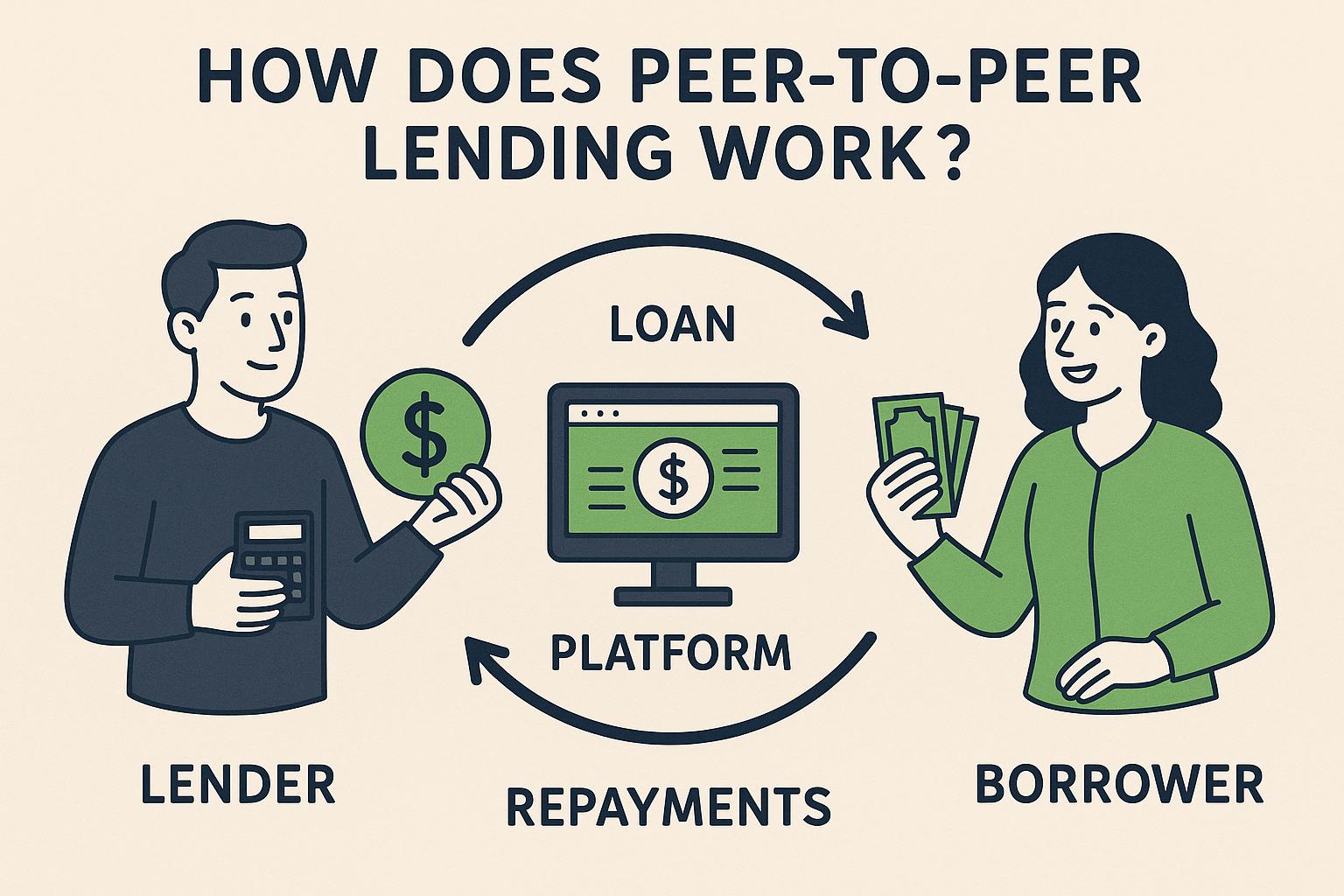
How does peer-to-peer lending work?
-
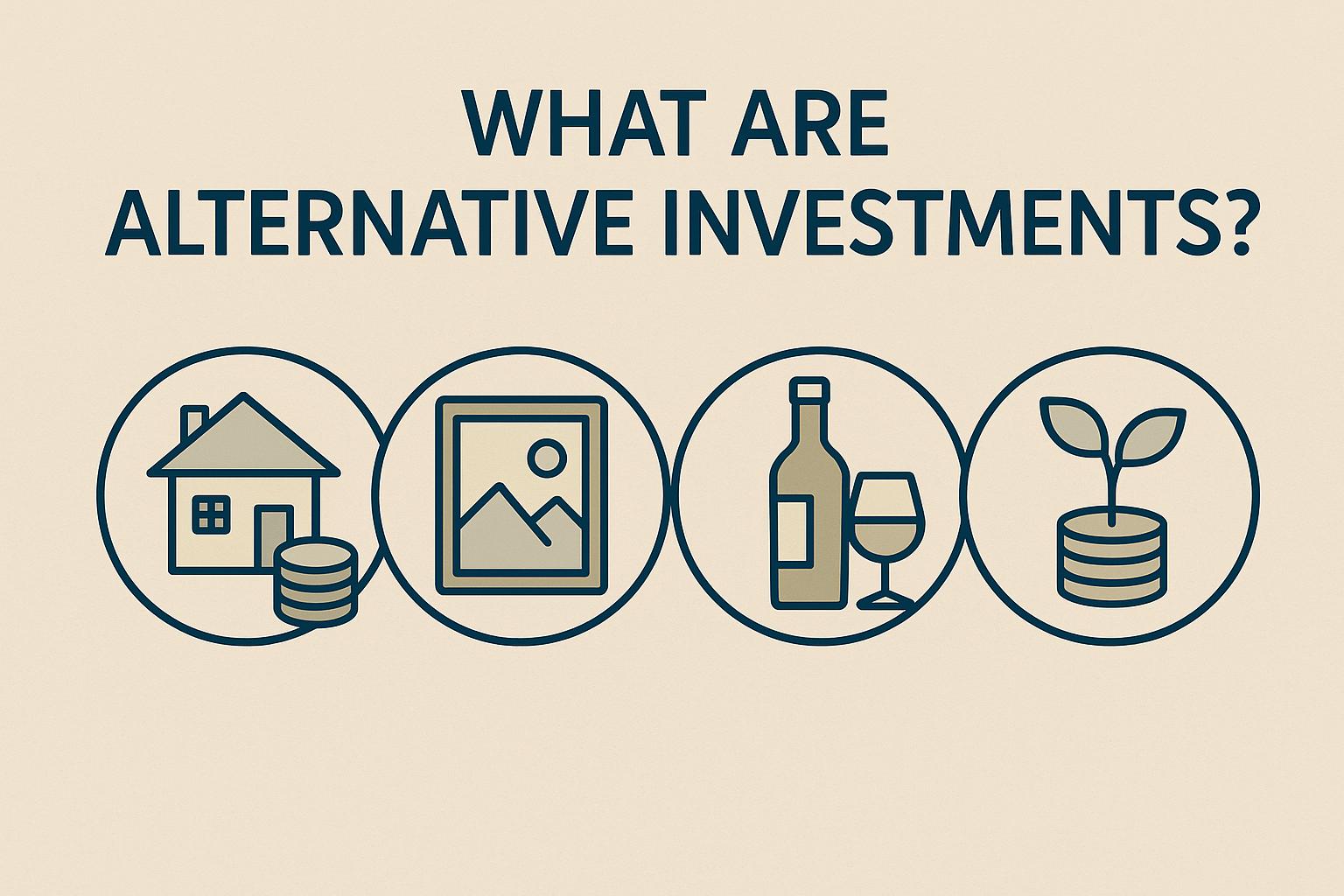
What are alternative investments?
-

How do I invest in Bitcoin and Ethereum?
-

What are cryptocurrencies and how do they work?
-
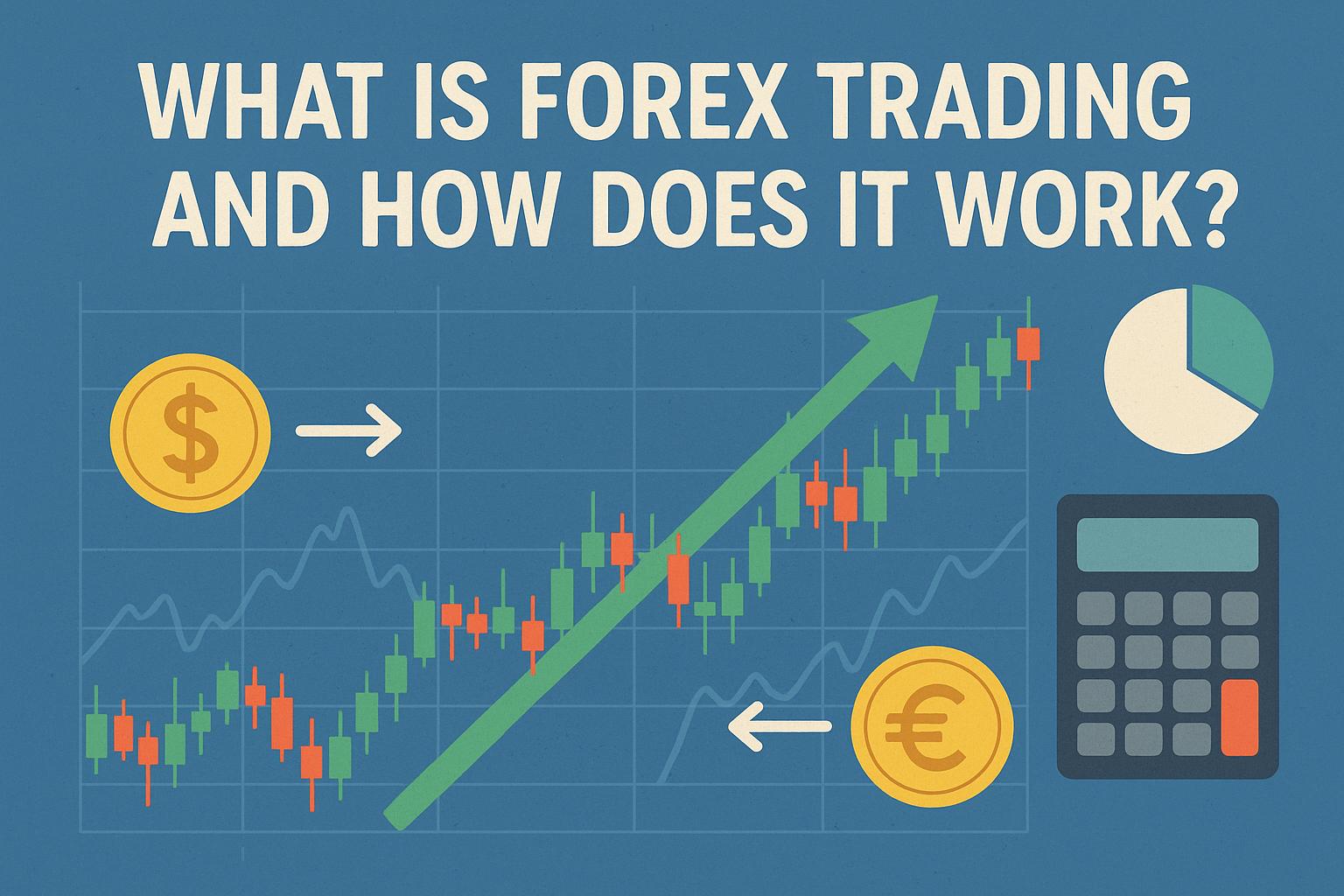
What is forex trading and how does it work?
-
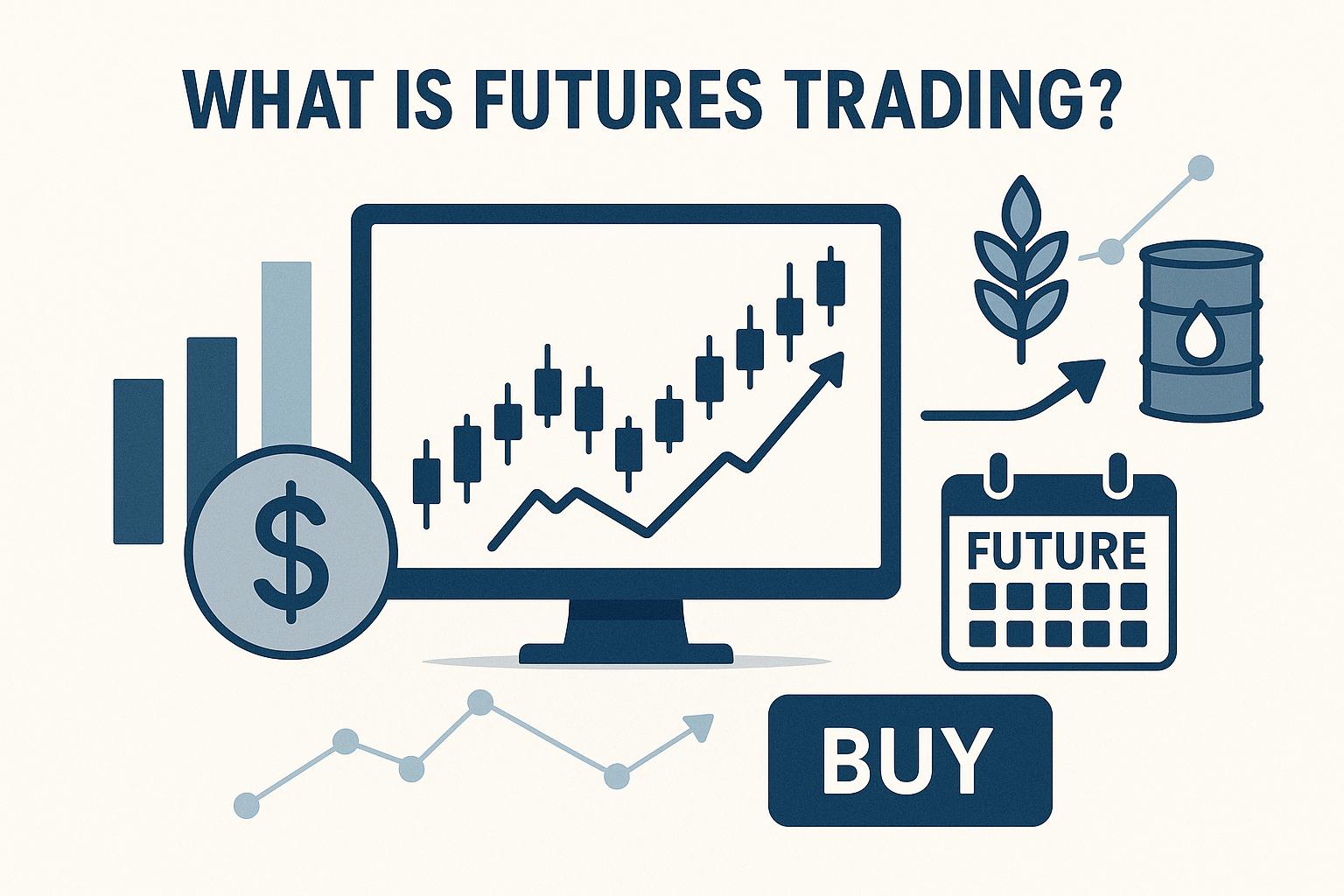
What is futures trading?
-

What is commodities trading?
-
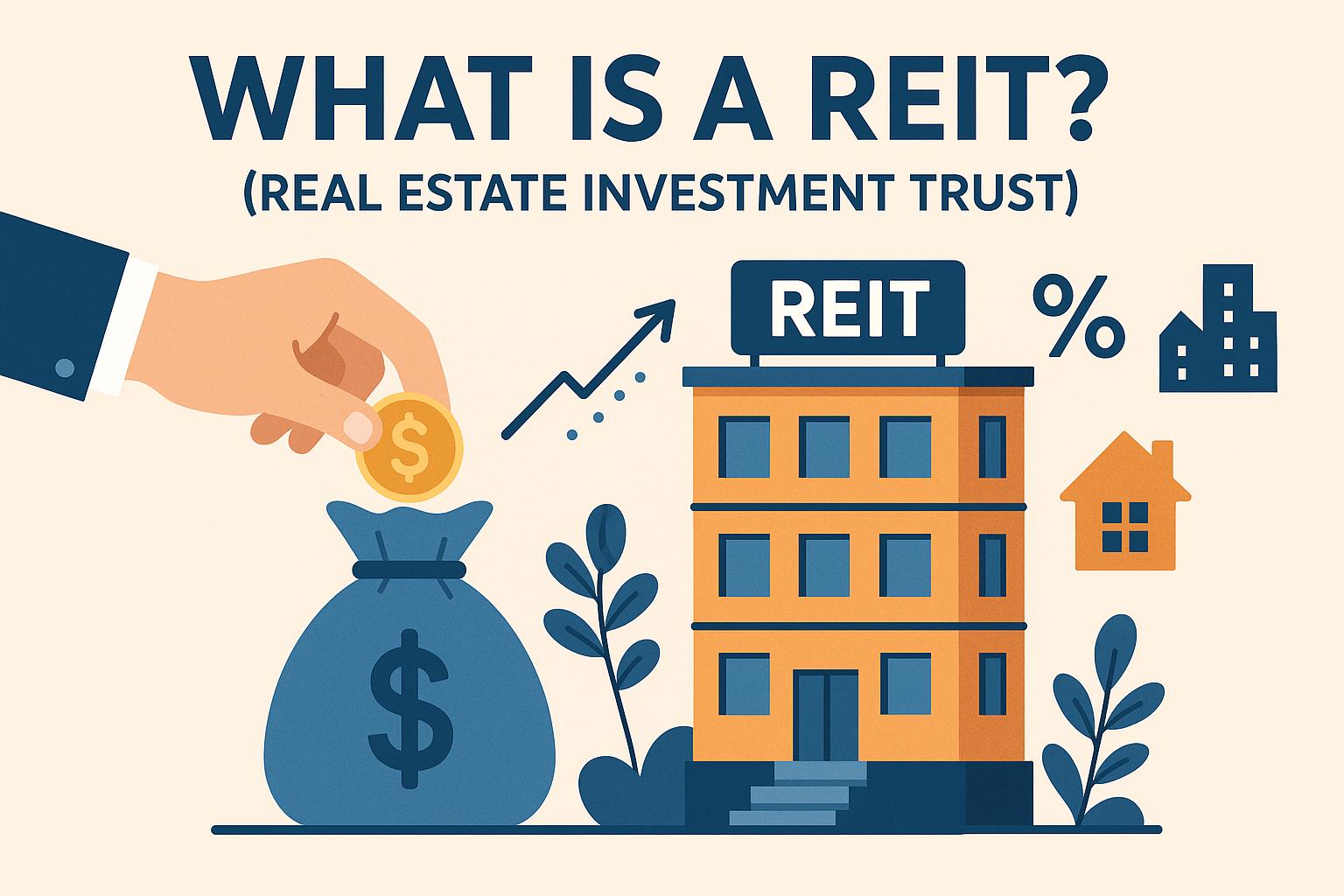
What is a REIT (Real Estate Investment Trust)?
-

How do I invest in real estate?
-

What is venture capital investing?
-
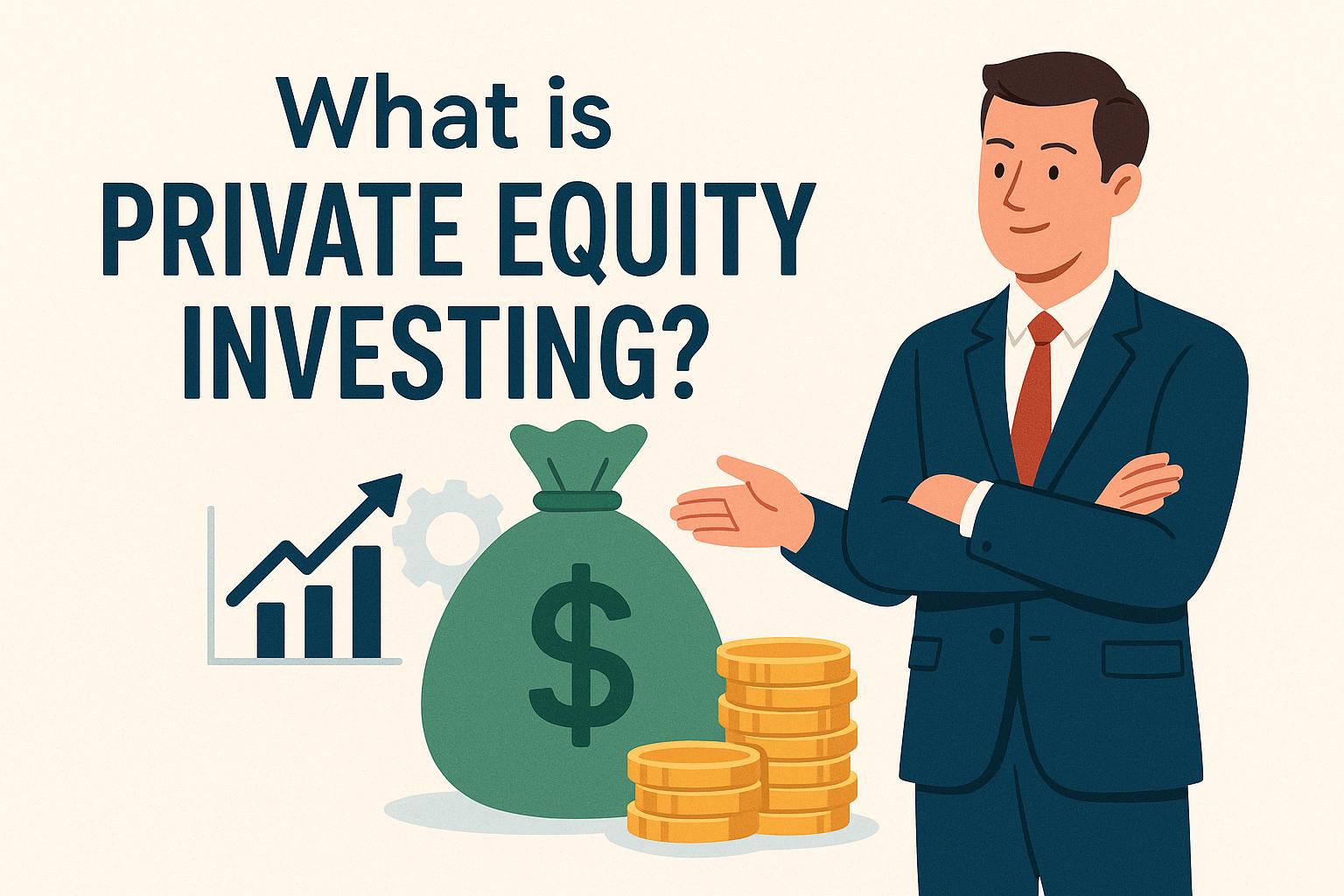
What is private equity investing?
-
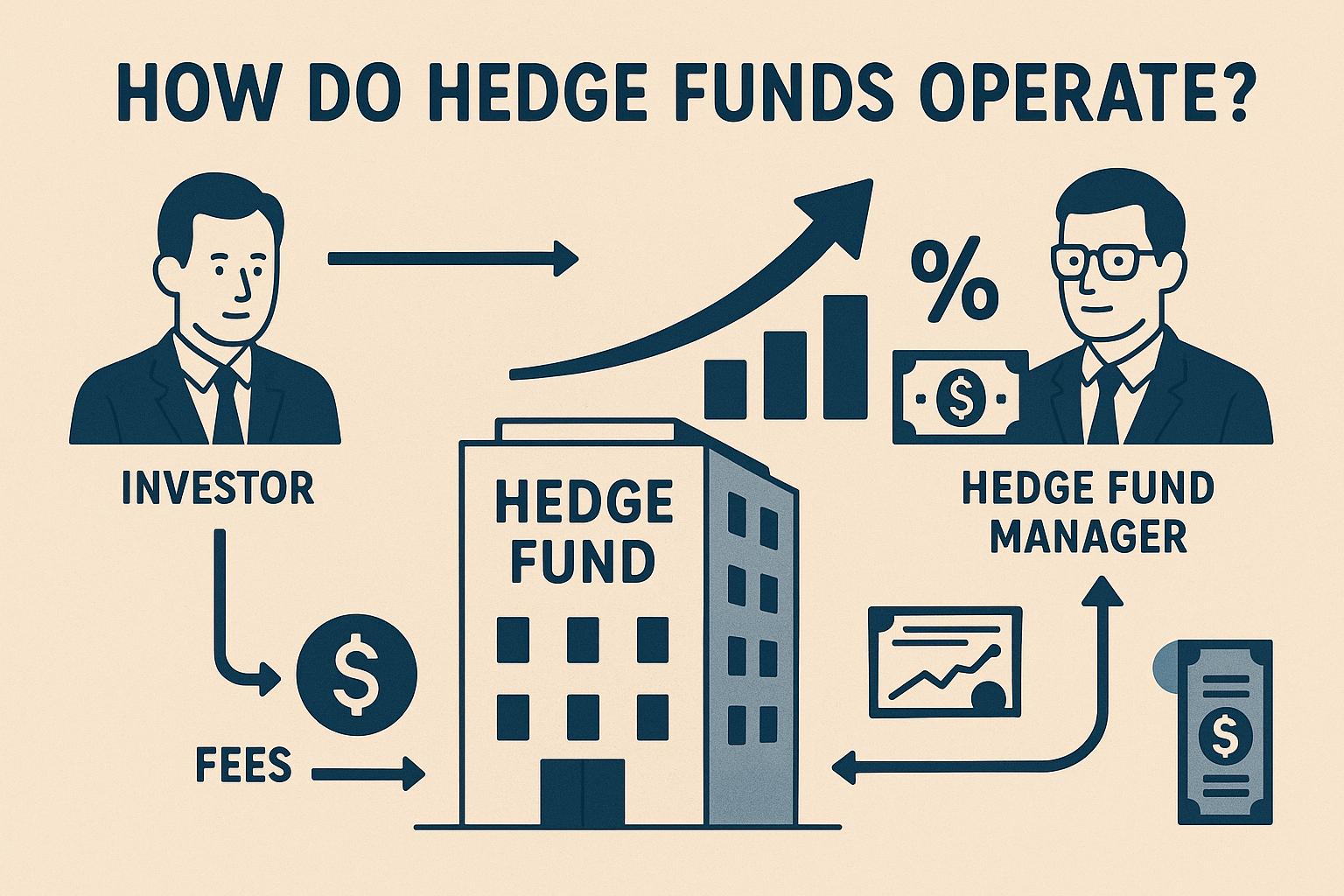
How do hedge funds operate?
Trading
Differences Between Trading and Investing
Trading and investing both involve putting money into financial markets, but they’re not the same thing. While they might look similar on the surface—buying and selling stocks, for example—the goals, strategies, and timelines behind them are different. Knowing the difference helps you choose the approach that suits your financial goals, risk tolerance, and lifestyle.
Trading is the act of buying and selling assets—like stocks, forex, or cryptocurrency—with the goal of making short-term profits. Traders don’t aim to hold an investment for years. Instead, they try to capitalize on price movements over minutes, hours, days, or weeks. It’s about catching short-term trends. Day traders go for super-short price movements and will close all their open positions before the trading day is over, while swing traders take a somewhat longer approach and will keep positions open for longer, e.g. a few days or weeks.
Investing, on the other hand, is about the long game, and investors typically buy assets they believe will grow in value over years or decades. They’re less concerned with short-term ups and downs and more focused on things like company fundamentals, economic trends, and steady, compounding growth. Investors often choose stocks, ETFs, mutual funds, real estate, or bonds, aiming to build wealth gradually. Many invest regularly over time and let their money grow through reinvested dividends and rising asset values.
Of course, the categories overlap, and it is not possible to say that all positions held for X amount of days automatically become investments. Below, we will look at a few general points where trading tends to differ from investing, and understanding them can help you better understand the different dynamics behind trading and investing.
Key Differences Between Trading and Investing:
- Time Horizon
Traders aim for fast gains in the short term.
Investors build wealth slowly over the long term.
- Strategy
Traders tend to rely heavily on technical analysis, charts, and patterns.
Investors often focus more on fundamentals, e.g. company figures, business models, and industry trends.
- Risk and Volatility
Trading tends to be riskier and more volatile. Mistakes can be costly, fast.
Investing is generally more stable, but requires patience, and the risk is never zero.
- Frequency of Transactions
Traders are active, sometimes making multiple trades per day.
Investors make fewer, more strategic decisions—often holding for years once they have invested in something.
Common Trading Strategies: Which Style Fits You Best?
Trading isn’t a one-size-fits-all activity. There are several styles, each with its own pace, strategy, and mindset. Whether you’re looking to trade for a few seconds or hold positions for weeks, understanding common types of trading styles can help you find the approach that suits your personality, lifestyle, and risk tolerance best.
Day Trading: Leave No Positions Open Overnight
Day trading is one of the most well-known trading styles. As the name suggests, day traders open and close all positions within the same trading day, often within just a few hours or even minutes.
This style tend to rely heavily on technical analysis, charts, and real-time news. The goal is normally to catch small price movements in high-volume markets. While the profit per trade is usually small, doing multiple trades per day can add up—if done well. It is also common among day traders to use leverage, because even a small price movement can translate into a big profit if position is big.
Day trading is fast-paced and intense. It requires attention, a solid strategy, and the emotional strength to handle quick wins and losses. Many successful day traders use technical analysis to identify suitable entry points, stop-loss points and take-profit points in advance. They put in orders and then step back a bit, because otherwise it is easy to get caught up in strong emotions when the market begins to move. Without a well-defined strategy in place for entry, exit and stop-loss, a day trader can easily succumb to impulsive trading and wipe out their trading account.
A positive aspect of day trading is that you do not go to sleep with positions open. There is no need to lay awake at night worrying about investments. Some traders very much prefer the intense – but time limited – stress of day trading, since it means not worrying about open positions when they are away from the screen.
You can learn more about day trading by visiting DayTrading.com
Scalping – A Subset of Day Trading
Scalping is a type of super-fast day trading. Scalpers aim to make dozens—or even hundreds—of trades per day, each lasting just seconds to minutes. They profit from tiny price changes, often relying on ultra-low spreads and lightning-fast execution.
This approach requires a suitable trading account and a high-speed internet connection. Today, many scalpers also utilize specialized scalping software.
Scalping is a technique that can be profitable even in stagnant markets, since the scalper profits from very tiny fluctuations rather than trying to ride stronger trends. It’s not for the faint-hearted, but when done right, it can deliver consistent returns over time. Scalping is usually best suited to experienced traders using high-volume strategies.
News-Based Trading / Event Trading
Some traders focus on market-moving news, such as economic reports, central bank decisions, or earnings announcements. These events often trigger sharp, sudden price moves—and skilled traders can profit from them. News-based traders need to be fast, informed, and capable of making decisions under pressure. Timing is everything, and knowing how markets typically react to certain headlines is key.
Swing Trading – Profit From Medium-Long Trends
Swing traders take a slightly slower approach. They hold positions for several days, weeks, or sometimes even a few months, aiming to profit from short- to medium-term price movements.
Instead of staring at small price movements, swing traders look for bigger moves based. They often combine technical analysis and fundamental analysis, e.g. by looking at both earnings announcements, macroeconomic trends, and breakout patterns.
This style offers a balance between active trading and a manageable intensity, making it popular among traders who are balancing trading with another full-time job. You can learn more about Swing Trading on SwingTrading.com.
Position Trading – Almost Investing
Position trading sits somewhere between swing trading and investing. Traders using this style typically hold positions for several months and sometimes even for more than a year, depending on broader market trends.
Unlike traditional investors, position traders are typically actively looking for entry and exit points using both technical analysis and fundamental analysis.
This style works well for those who prefer a slower pace but not commit for as long as the buy-and-
hold investors. It also tends to involve fewer trades and lower transaction costs.
What Can I Trade?
A wide range of different assets and instruments are available for trading, and a trader can for instance speculate on stocks, forex, cryptocurrency, and commodities. Speculating on indices is also popular. Another way to get indirect exposure to a basket of assets is through exchange-traded funds (ETFs).
Many traders use derivatives for their speculation, instead of actually buying, owning and selling assets. Examples of well-known derivatives are options, forwards, futures and swaps.
Below, we will take a look at three different types of trading that have become popular among beginners: forex trading, CFD trading, and binary options.
Forex Trading
Forex, short for foreign exchange, is the largest and most liquid market in the world. It involves trading currency pairs—like EUR/USD or USD/JPY—with the aim of profiting from changes in exchange rates.
The global forex market is active 24 hours a day, five days a week, giving traders around the world vast opportunities. It’s popular with both day traders (including scalpers) and swing traders, and many brokers offers very high leverage for forex speculation. Because currencies are influenced by global events, economic data, interest rates, and politics, successful forex traders typically understand both technical analysis and fundamental analysis.
Simply trading one currency for another at the forex market and quickly settling the transaction is known as spot forex trading, and it forms the basis for the forex market and the forex exchange rates. In addition to spot forex trading, a lot of traders also utilize forex-based derivatives, such as futures contract and forex options.
CFD Trading
A Contract for Difference (CFD) is a type of derivative where your broker is also your counterpart in the trade, and this creates a built-in conflict of interest. It is therefore even more important than normally to pick a strictly regulated broker with a good reputation.
Here’s the core idea: you agree with the broker to exchange the price difference between the opening and closing of a trade. If the market moves in your favor, you profit. If it moves against you, you take the loss.
CFDs are popular since they are very flexible. You can speculate on a wide range of things, e.g. forex, stocks, indices, cryptocurrency, and commodities. It is easy to get started even on a minimal budget, and CFDs are offered with leverage. It is easy to pick CFDs that suit your time preferences. CFD trading is fast, flexible, and appeals to those who want to trade on margin with a wide range of global markets.
CFDs often come with high leverage, which magnifies both profits and losses. Do not use leverage unless you know exactly how it works and have adjusted your risk-management plan accordingly. A lot of beginner CFD traders get their account balance wiped out quickly from using leverage without the proper skills and risk-management routines.
Many of the stricter jurisdictions around the world is now limiting how much leverage brokers are permitted to extend to non-professional traders (retail traders) and they can also require Negative Account Balance Protection, to make sure non-professional traders don´t end up owing their broker money.
Binary Options Trading – Restricted in Many Jurisdictions
Binary options trading is different from most other types of trading because it has a fixed outcome. You’re not buying or selling an asset—you’re simply predicting whether the price will go up or down over a set period of time. If you’re right, you get a fixed payout. If you’re wrong, you lose your entire stake. That’s why it’s called a “binary” option—there are only two possible outcomes.
Mathematically, binary options are stacked to benefit the broker. When you lose, you lose your entire stake. When your prediction is correct and you get a pay out, the payout is just a percentage of the stake.
Example: If you risk $100 and your prediction is wrong, you lose $100. If you risk $100 on a binary option with a 85% payout rate and your prediction is right, you get your stake back ($100) and a profit of $85.
Binary options are typically use for very short-term speculation, making it more akin to gambling. Some binary options have a life span of 1 minute or even less. Binary options are accessible and easy to understand on the surface, but extremely high risk.
Binary options are banned or heavily restricted in several countries due to high fraud rates and lack of transparency. With binary options, your broker is also your counterpart in the trade, and there are many cases where brokers have not handled this conflict of interest in a reputable manner.
Since the stricter financial authorities around the world have largely banned brokers from offering and selling binary options to non-professional traders, binary option brokers that still engage in this practice tend to be unregulated or regulated by laissez-faire authorities. Using that type of broker increases the risk of becoming the victim of financial fraud.
This article was last updated on: April 3, 2025